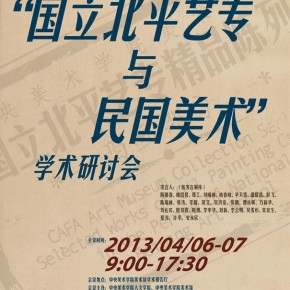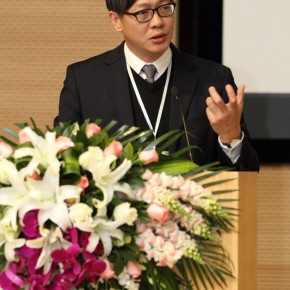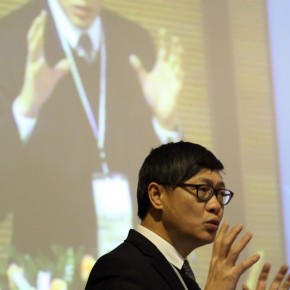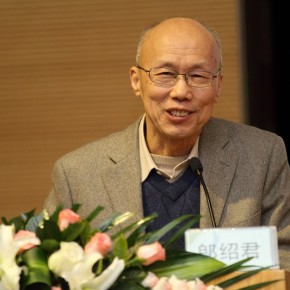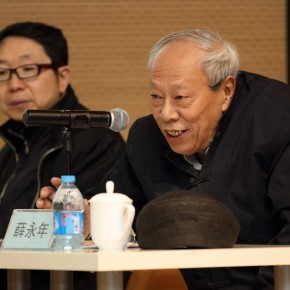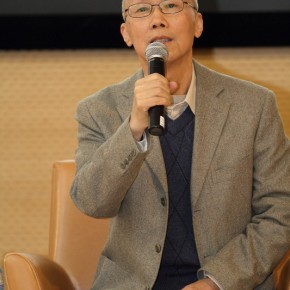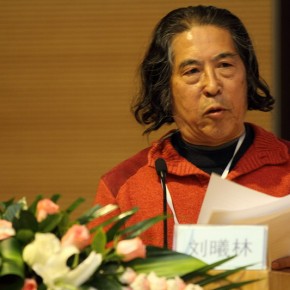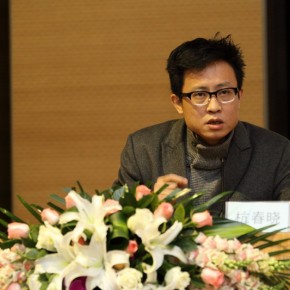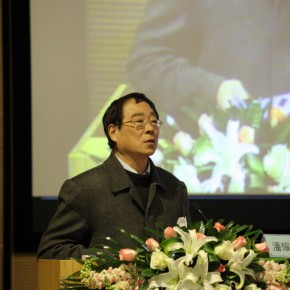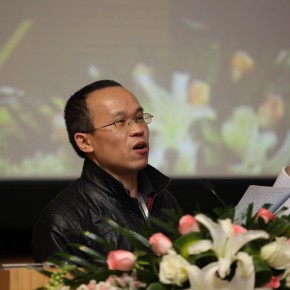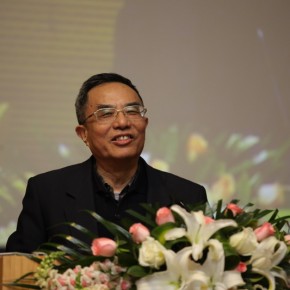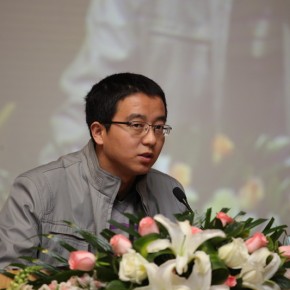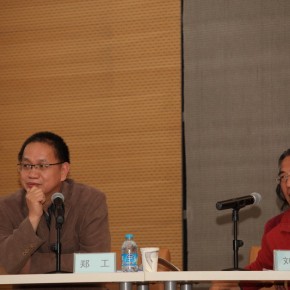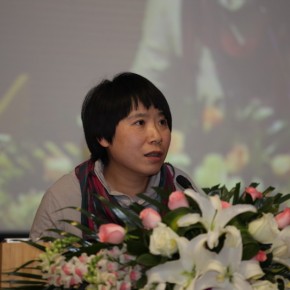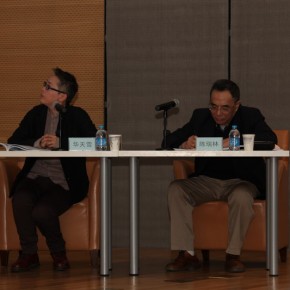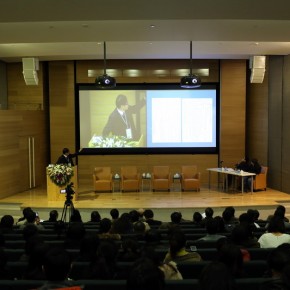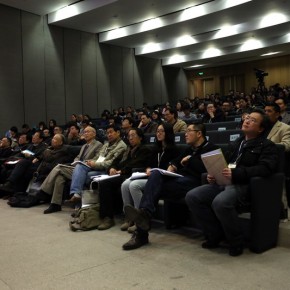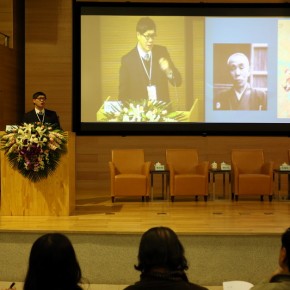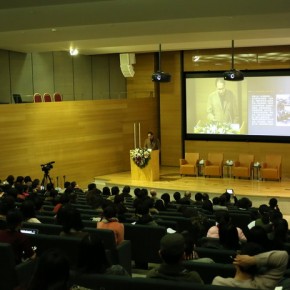
Jointly hosted by School of Humanities and Art Museum of CAFA, Academic Discussions of “National Beiping Art School and Fine Art of the Republic of China”, were held at the Academic Lecture Hall of the CAFA Art Museum, from April 6 - 7, 2013. It was co-organized by Professor Yin Jinan, Dean of School of Humanities, CAFA, Associate Professor Cao Qinghui, Deputy Director of the Department of Art History, and Wang Huangsheng, Curator of CAFA Art Museum. Twenty-seven noted scholars were invited to speak, eight scholars served as commentors in the academic discussions, together with an academic report of the overview on the memories of the Period of National Beiping Art School and Fine Art of the Republic of China, revealing the latest research achievements.
The meeting officially began at 8:50 on April 6, Pan Gongkai, Yin Jinan and Wang Huangsheng, addressed at the ceremony, and said the discussion brought together various academic strengths, was a gift to commemorate the ninety-fifth anniversary of CAFA, a contribution for combing through the history of CAFA, the macro construction of the history of art.
The First section: keyword “Early Faculty”
Chen Jichun, a teacher from the Art Institute of Macau initially spoke: “Preliminary Discovery of Cheng Kam’s Career in Japan”. Cheng Kam studied and lived in Japan before serving as the president of Beijing School of Fine Arts, and he had combed through his experiences before his return to China. Commenter Xue Yongnian said this report departed from the historical data, so corrected some existent errors, filling in the blanks of the research of Cheng Kam in Japan.
Then, Lang Shaojun, from the National Academy of Arts gave a lecture entitled “Xiao Junxian, Director of the Department of Chinese Painting, National Beiping Art School”, who was unknown in the research on the history of art, and his position was generally underestimated. Lang analyzed the background of his serving as the teacher of the Discipline of Chinese Painting of the National Beiping Art School from 1918 to 1928 and his personality. He thought Xiao had his own personal style, and had a close relationship with the Chen Shizeng’s family, which should be paid attention to. Xue Yongnian agreed to his views but the lack of material prevented everything being confirmed.
This was followed by Zheng Gong, from the National Academy of Arts, who gave a lecture entitled “The Details of the Painting – ‘Chen Shizeng’s Portrait’ and ‘Wang Mengbai’s Portrait’ by Li Yishi”. Starting from the two works painted at the same period, Zheng hoped to study the development of the history of art from the social relations of the art circle in the Republic of China. He believed that various styles would be digested by the communication, and by gathering a new circle for the same hobby, to affect the style and the creation path of the artists. Xue Yongnian admired his novel approach, and clear thinking, but had a question about “The Five Contemporary Masters of Seal”, and Zheng accepted his valuable advice.
The second section: keyword “Painting Circle and Teachers”
Liu Xilin, from the National Art Museum of China, gave a lecture entitled “Two Events in the History of National Beiping Art School”. From a letter from Wang Ziyun, teacher of National Beiping Art School, he talked about two student strikes in the school, analysis of “pseudo art school”, he thought it was a fault to entitle the school this name under the rule of the puppet regime, preferring “art school left behind”. Lang Shaojun agreed to his view, and admitted the word “pseudo” really provoked controversy in the political cultural history, which we should pay attention to, at the same time, he pointed out that it was necessary to research oral history, which Liu should continue to carry out an in-depth study.
Subsequently, Hang Chunxiao, from China National Academy of Arts, gave a lecture entitled “The imagination and expression of the character ‘Guo/ County’ - Fu Xinshe’s ‘Self-assume’ and ‘Subject Reconstruction’”. He mainly applied the concept of the division in Western linguistics, to study the subject imagination of Fu Xinshe, a painter as one of the adherents of the broken royal family, and we can see the change in the concepts of “Guo/Country” in his mind, from the letters he wrote to Chen Shizeng, as well as the poetry inscription of the late paintings in his later years.
Then, Hua Tianxue, from the China National Academy of Arts, lectured “Xu Beihong in 1949”, analyzing the files of the National Beiping Art School in 1949, she found that although Xu Beihong reserved his status after the liberation, he had no real power, since then, the art education was mainly in the control of the regime of CPC, therefore, the position of Xu Beihong in the history of art education is worthy of discussion again.
Lang Shaojun approved of the latter speakers who had new ideas and innovation, Liu used a new method to study art history, using a lot of effort to collect first-hand information, which was very valuable, while Hua had the confidence to challenge the tradition, starting from files, providing us with a new idea of study.
The third section: keyword “History of the School and Painting Circle”
First of all, Pan Yaochang, from the College of Fine Arts, Shanghai University gave a lecture “Revising the history in the golden age - is the history of the academy ready?”, comparing CAFA and Zhejiang Academy of Fine Arts (now China Academy of Art), he proposed several major issues during revising the history, including the inherited relationships, the first presidents, as well as the process of the history of the Cultural Revolution. Liu Xilin, as the commenter, agreed to answer several questions, which he believed were very enlightening.
Then, Peng Fei, from Guangdong Zhanjiang Normal University, gave a report on “National Beiping Art School and Beijing Art Circle in the Republic of China”, fully departed from historical data, from a macro perspective, combing through it from the categories of discipline, overseas study, research institute, works, exhibitions and etc., briefly summarized the situation of the schools and painting circles at the time.
Subsequently, Chen Ruilin, from the Academy of Art & Design, Tsinghua University, gave a lecture on “Resurrection Movement of Chinese Painting, National Beiping Art School, Qi Baishi and the construction of PRC”, he believed that the resurrection movement of Chinese painting was the natural reaction impacted on by foreign culture, rather than a simple regression. Taking the communication between Qi Baishi and the foreigners for example, revealing that Chinese paintings were impacted on by the Western style. Liu believed that art circles were not the only place influenced by foreign factors, that he suggested that Chen could find a new perspective to research it.
Finally, Zhang Tao, from “Art Studies” had a lecture “Qi Baishi and National Beiping Art School”, he gradually analyzed the artistic career of Qi Baishi on the basis of Qi Baishi’s chronology, by comparing the changes in the living standards and attitudes, summing up Qi’s desire for material, which was unknown. Liu praised the angle of this article, but didn’t agree that Qi Baishi had the same status to Jiang Feng, Xu Beihong, etc.
The fourth section: keyword “Resources and Works”
Li Chao, from the College of Fine Arts, Shanghai University, initially made a speech on “Zhang Xian and National Beiping Art School – the Resource Issues of the “Boundary of the South and North of the Modern Chinese Art”, by analyzing of the records of Zhang Xian by his friend Pang Xunqin and Fu Lei, he found a large number of data on the different regions of the South and the North, he pointed out that when analyzing the data, we should pay attention to the different regions of them, revealing an artist of the Republic of China. Chen Ruilin reaffirmed his idea, but questioned his saying of “boundary of the South and the North”, which was related to cultural psychology.
Then, Mo Ai, from the College of Fine Arts, Capital Normal University, made a speech entitled “Viewing Again and Understanding of Xu Beihong’s Exploration in the Early Republic of China”, with the analysis of the development context of Xu Beihong’s Chinese paintings and oil paintings, she recognized that his oil painting had once influenced his Chinese painting, but eventually gave up his favorite Western painting experience in a social context.
Finally, Wu Hongliang from Beijing Fine Art Academy, gave a report entitled “I Search for What I have – About the Works and Life of Sun Zongwei”, his works were of a unique style and contemporary, always reflecting a simple artistic ideal, but because of his individual character, he did not do well in teaching. Chen said Mo and Wu created innovative studies.
To be continued...
Photography: Hu Zhiheng/CAFA ART INFO
Journalists: Sun Tianyi, Yu Ya/CAFA ART INFO
Translated by Chen Peihua and edited by Sue/CAFA ART INFO


